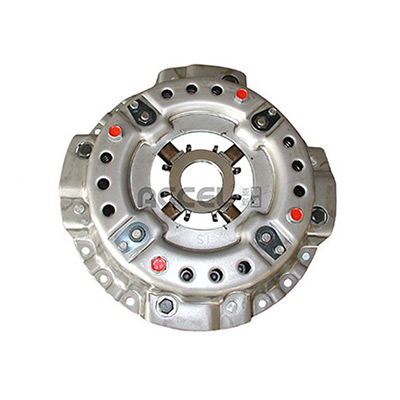- Arabic
- French
- Russian
- Spanish
- Portuguese
- Turkish
- Armenian
- English
- Albanian
- Amharic
- Azerbaijani
- Basque
- Belarusian
- Bengali
- Bosnian
- Bulgarian
- Catalan
- Cebuano
- Corsican
- Croatian
- Czech
- Danish
- Dutch
- Afrikaans
- Esperanto
- Estonian
- Finnish
- Frisian
- Galician
- Georgian
- German
- Greek
- Gujarati
- Haitian Creole
- hausa
- hawaiian
- Hebrew
- Hindi
- Miao
- Hungarian
- Icelandic
- igbo
- Indonesian
- irish
- Italian
- Japanese
- Javanese
- Kannada
- kazakh
- Khmer
- Rwandese
- Korean
- Kurdish
- Kyrgyz
- Lao
- Latin
- Latvian
- Lithuanian
- Luxembourgish
- Macedonian
- Malgashi
- Malay
- Malayalam
- Maltese
- Maori
- Marathi
- Mongolian
- Myanmar
- Nepali
- Norwegian
- Norwegian
- Occitan
- Pashto
- Persian
- Polish
- Punjabi
- Romanian
- Samoan
- Scottish Gaelic
- Serbian
- Sesotho
- Shona
- Sindhi
- Sinhala
- Slovak
- Slovenian
- Somali
- Sundanese
- Swahili
- Swedish
- Tagalog
- Tajik
- Tamil
- Tatar
- Telugu
- Thai
- Turkmen
- Ukrainian
- Urdu
- Uighur
- Uzbek
- Vietnamese
- Welsh
- Bantu
- Yiddish
- Yoruba
- Zulu
Sep . 16, 2024 14:02 Back to list
Automotive Fan Belt - Essential Engine Component | Quality & Durability
Understanding the Importance of the Automotive Fan Belt
The automotive fan belt, commonly known as the serpentine belt, is an essential component of modern vehicles with internal combustion engines
. Although it may seem like a simple rubber strap, its role is crucial in maintaining the efficiency and performance of the engine, making it a fundamental aspect of automotive engineering.The primary function of the fan belt is to drive multiple peripheral devices powered by the engine’s crankshaft. These devices typically include the alternator, power steering pump, water pump, and air conditioning compressor. By transferring rotational energy from the engine to these components, the fan belt ensures that they operate efficiently, contributing to the overall functioning of the vehicle.
Over time, however, fan belts undergo wear and tear due to constant friction and exposure to various environmental conditions. Heat, oil, and dirt can deteriorate the rubber material, leading to cracks, fraying, or even complete failure. A broken fan belt can result in several issues, including overheating of the engine, loss of power steering functionality, and failure of the alternator, leading to battery drain. Hence, regular inspection and maintenance of the fan belt are essential to avoid such problems.
Identifying signs of a deteriorating belt is crucial for vehicle owners. Common indicators include squeaking noises when starting the engine or turning the steering wheel, visible cracks or fraying on the belt surface, and, in some cases, a warning light on the dashboard. If any of these symptoms are present, it's advisable to have the fan belt checked by a qualified mechanic promptly.
automotive fan belt

Typically, fan belts are replaced during routine maintenance, usually every 60,000 to 100,000 miles, depending on the vehicle's make and model. However, it’s always best to refer to the owner's manual for specific recommendations concerning replacement intervals. Some high-performance vehicles may have different requirements or may utilize timing belts instead of fan belts.
The installation of a new fan belt should ideally be done by a professional. Although skilled DIY enthusiasts can attempt to replace it, ensuring proper tension and alignment is crucial to prevent additional wear or mechanical failure. When purchasing a replacement belt, it’s essential to choose high-quality products that meet manufacturer specifications.
In recent years, advancements in technology have led to the development of alternative designs for fan belts, such as tensioning systems that automatically adjust the belt's tightness. These innovations help further minimize maintenance requirements and extend the lifespan of the belt.
In conclusion, the automotive fan belt is more than just a simple accessory; it plays a vital role in the functioning of a vehicle. Regular inspection and timely replacement of the fan belt are critical for ensuring the longevity and reliability of the engine and its associated systems. Vehicle owners should remain vigilant about the condition of their fan belts to enjoy safe and smooth driving experiences. Proper understanding and maintenance can make all the difference in keeping your vehicle in optimal working condition.
-
Upgrade Power Steering Pump Belt for Smooth, Quiet Operation
NewsAug.27,2025
-
Precision Timing Belt & Chain: Engine Performance & Durability
NewsAug.26,2025
-
Precision Lathe Drive Belts: Durable & Reliable Performance
NewsAug.25,2025
-
84.5 Serpentine Belt: Durable & Precision Fit for Your Engine
NewsAug.24,2025
-
Premium Ribbed Drive Belts for Quiet Power Transmission
NewsAug.23,2025
-
High-Performance Vehicle Timing Belt for Engine Precision
NewsAug.22,2025

